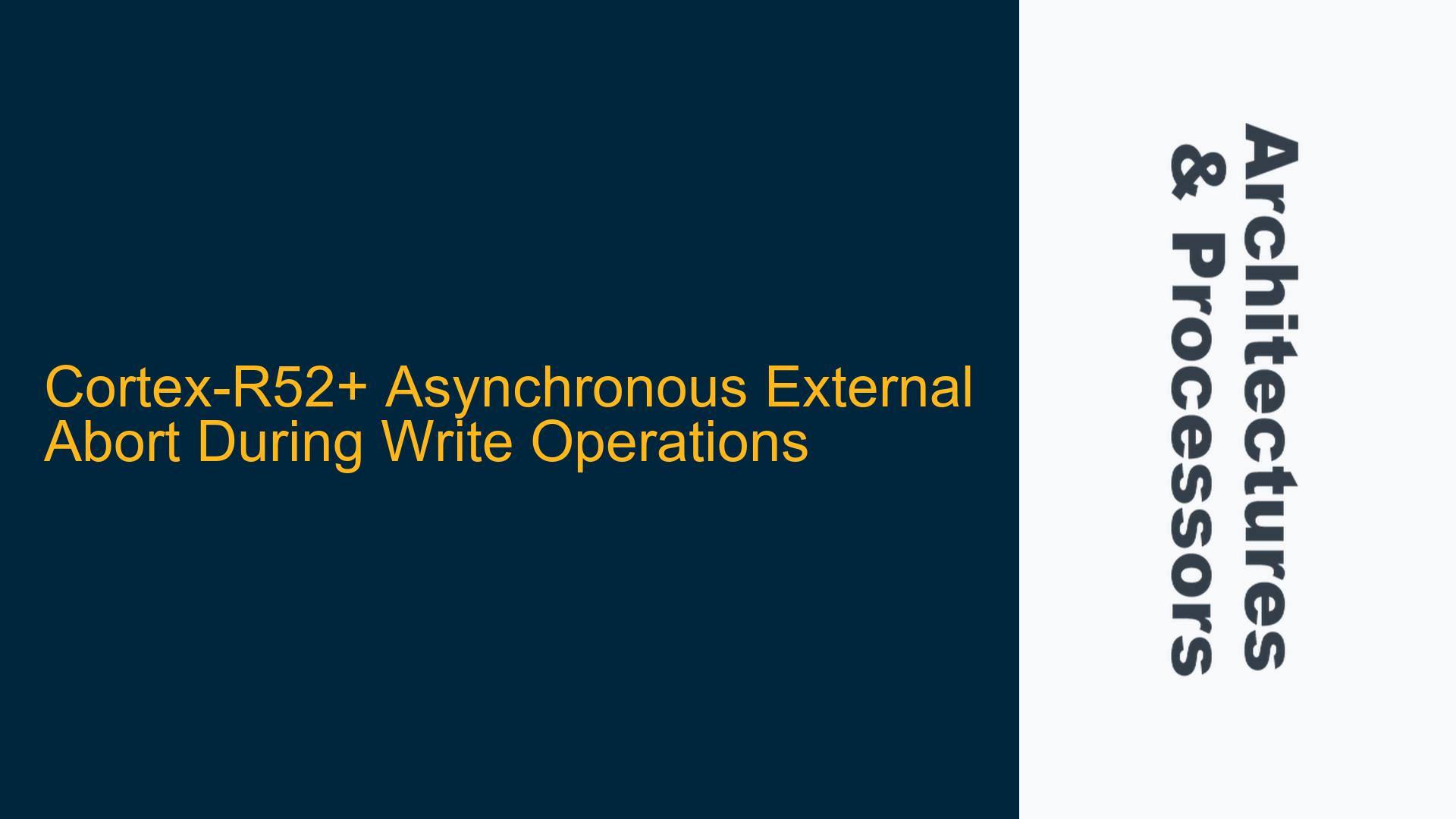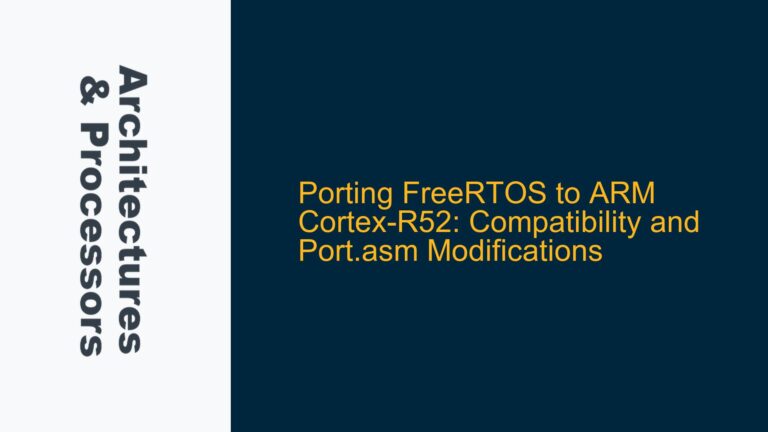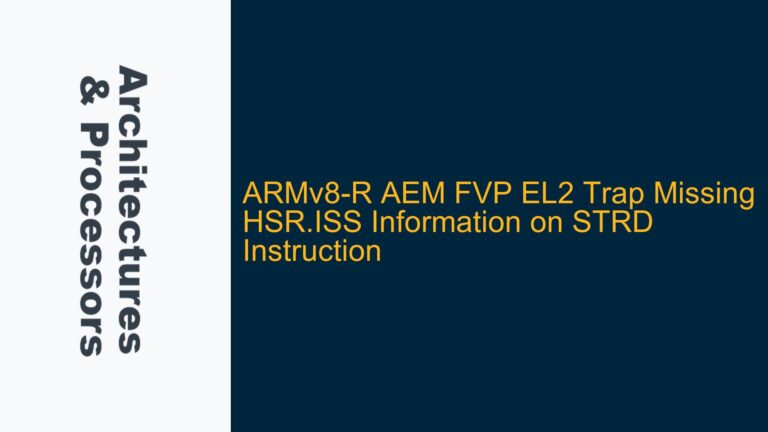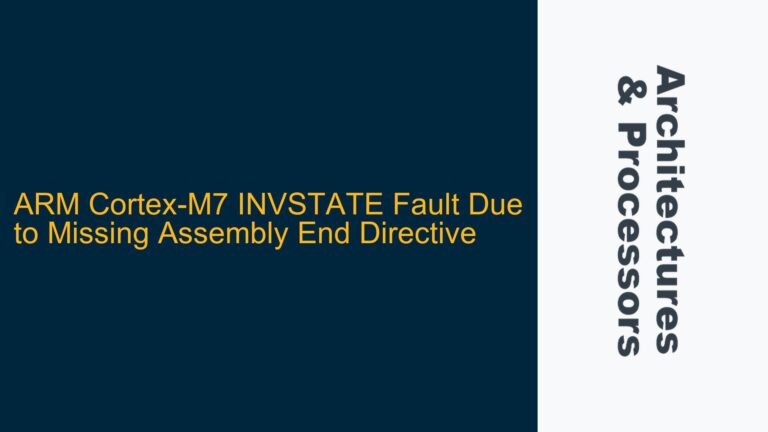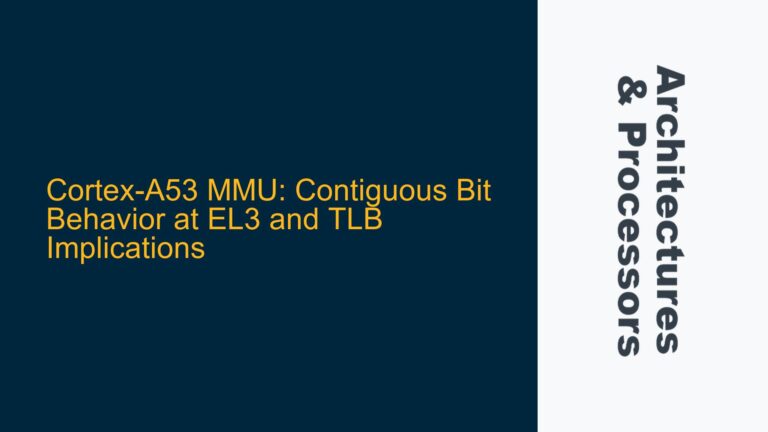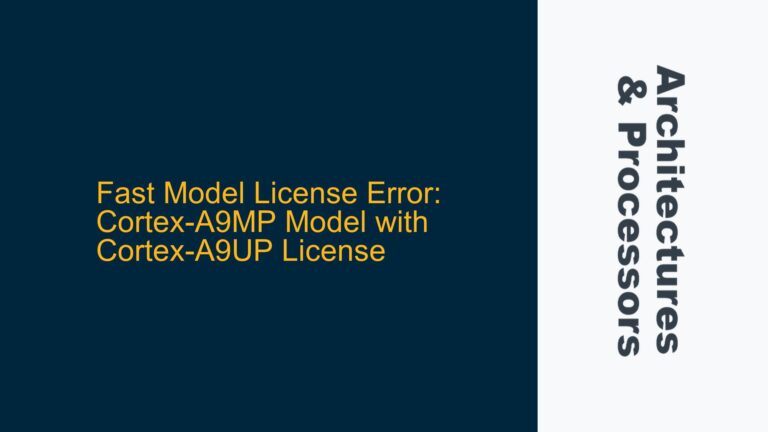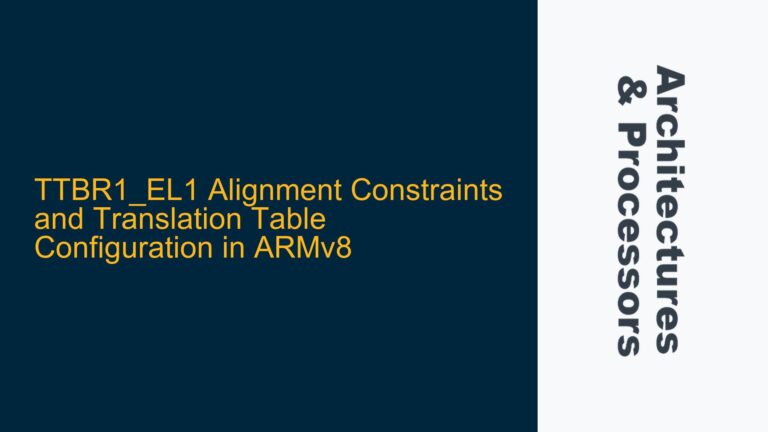Cortex-R52+ Asynchronous External Abort: Understanding the DFSR 0xA11 Error
The Cortex-R52+ processor is a high-performance, real-time capable core designed for safety-critical applications. However, like any complex system, it can encounter issues that require deep architectural understanding to diagnose and resolve. One such issue is the occurrence of an asynchronous external abort during write operations, indicated by the Data Fault Status Register (DFSR) value of 0xA11. This error signifies that an external abort was triggered during a write access, but the exact cause is not immediately tied to the instruction that initiated the write. This asynchronicity complicates debugging, as the fault may manifest long after the offending instruction has retired.
The DFSR 0xA11 error is particularly challenging because it can arise from multiple sources, including but not limited to cache behavior, memory system configuration, and Memory Protection Unit (MPU) settings. The Cortex-R52+ employs a write-through cache architecture, which means that writes are immediately propagated to the main memory, unlike write-back caches where writes are deferred until cache line eviction. While this reduces the risk of dirty cache line evictions causing aborts, it does not eliminate the possibility of buffered writes or other memory system issues leading to asynchronous external aborts.
To fully understand the DFSR 0xA11 error, it is essential to delve into the Cortex-R52+ memory system architecture. The processor interfaces with external memory and peripherals through an Advanced Microcontroller Bus Architecture (AMBA) bus, typically AXI or AHB. The memory system includes components such as the MPU, cache, and memory controllers, each of which can contribute to the generation of external aborts. The MPU, for instance, enforces memory access permissions and attributes, and misconfigurations here can lead to bus-level faults. Similarly, the cache, even in write-through mode, can buffer writes temporarily, leading to asynchronous aborts if the memory system cannot handle the write request.
The Cortex-R52+ also supports Error Correction Code (ECC) for memory, which adds another layer of complexity. ECC can detect and correct memory errors, but improper initialization or configuration of ECC can result in external aborts. Additionally, the processor’s real-time capabilities mean that it often operates in environments with strict timing constraints, making it crucial to identify and resolve external aborts promptly to avoid system failures.
Buffered Writes, MPU Misconfigurations, and ECC Initialization Issues
The DFSR 0xA11 error can be attributed to several potential causes, each requiring a different approach to diagnose and resolve. One of the primary suspects is buffered writes. Even though the Cortex-R52+ employs a write-through cache, writes can still be buffered at various levels in the memory hierarchy. For example, the AXI bus interface may buffer writes to improve performance, and if an external abort occurs during the handling of a buffered write, the processor may not be able to associate the abort with the original instruction, resulting in an asynchronous external abort.
Another significant cause of DFSR 0xA11 errors is MPU misconfiguration. The MPU is responsible for defining memory regions and their access permissions. If a region is incorrectly marked as read-only, and a write operation is attempted, the memory system may generate a bus-level fault, leading to an external abort. Similarly, if a region is marked as no-access or non-executable, and an attempt is made to read or execute from that region, an external abort may occur. The MPU configuration must align with the memory system’s capabilities and the application’s requirements to avoid such issues.
ECC initialization and configuration can also lead to DFSR 0xA11 errors. ECC is used to detect and correct memory errors, but if the ECC logic is not properly initialized or configured, it may generate external aborts when it encounters uncorrectable errors. This is particularly relevant in safety-critical applications where ECC is often employed to ensure data integrity. Ensuring that the ECC logic is correctly initialized and that the memory system is configured to handle ECC errors is crucial to preventing external aborts.
Additionally, the Cortex-R52+ memory system may include other components such as memory controllers and interconnect fabrics, each of which can contribute to external aborts. For example, a memory controller may generate an external abort if it encounters an unsupported memory access type or if it detects a memory error. Similarly, the interconnect fabric may generate an external abort if it cannot route a memory access request to the appropriate destination. Understanding the memory system’s architecture and ensuring that all components are correctly configured is essential to preventing DFSR 0xA11 errors.
Diagnosing and Resolving Cortex-R52+ Asynchronous External Aborts
To diagnose and resolve DFSR 0xA11 errors, a systematic approach is required. The first step is to verify the MPU configuration. Ensure that all memory regions are correctly defined and that their access permissions align with the application’s requirements. This includes checking that read-only memories are marked as read-only in the MPU, that no-access regions are correctly defined, and that peripheral regions are marked as device memory and non-executable. Any discrepancies in the MPU configuration should be corrected, and the system should be retested to see if the external abort persists.
Next, examine the cache configuration. Although the Cortex-R52+ uses a write-through cache, it is still possible for writes to be buffered at various levels in the memory hierarchy. Disabling the cache entirely, as Grace WANG did, can help determine if the cache is contributing to the issue. If the external abort persists with the cache disabled, the issue is likely elsewhere in the memory system. However, if the abort is resolved, further investigation into the cache configuration and behavior is necessary. This may involve analyzing the cache’s interaction with the memory system and ensuring that buffered writes are handled correctly.
ECC initialization and configuration should also be reviewed. Ensure that the ECC logic is properly initialized and that the memory system is configured to handle ECC errors. This may involve checking the ECC configuration registers and ensuring that they are set correctly for the memory system in use. If ECC is not required, it may be possible to disable it entirely to simplify the memory system and reduce the risk of external aborts.
If the MPU, cache, and ECC configurations are correct, the next step is to examine the memory system’s other components. This includes the memory controllers and interconnect fabrics. Ensure that the memory controllers are correctly configured to handle the types of memory accesses generated by the application. This may involve checking the memory controller’s configuration registers and ensuring that they are set correctly for the memory system in use. Similarly, ensure that the interconnect fabric is correctly configured to route memory access requests to the appropriate destinations.
Finally, consider the possibility of hardware issues. While software and configuration issues are more common, hardware faults can also lead to external aborts. This may involve testing the memory system with known-good configurations and verifying that the hardware is functioning correctly. If hardware issues are suspected, further investigation with diagnostic tools and hardware testing may be necessary.
In conclusion, diagnosing and resolving DFSR 0xA11 errors on the Cortex-R52+ requires a thorough understanding of the processor’s memory system architecture and a systematic approach to identifying and addressing potential causes. By carefully examining the MPU configuration, cache behavior, ECC initialization, and other memory system components, it is possible to identify the root cause of the external abort and implement the necessary fixes to ensure reliable system operation.
